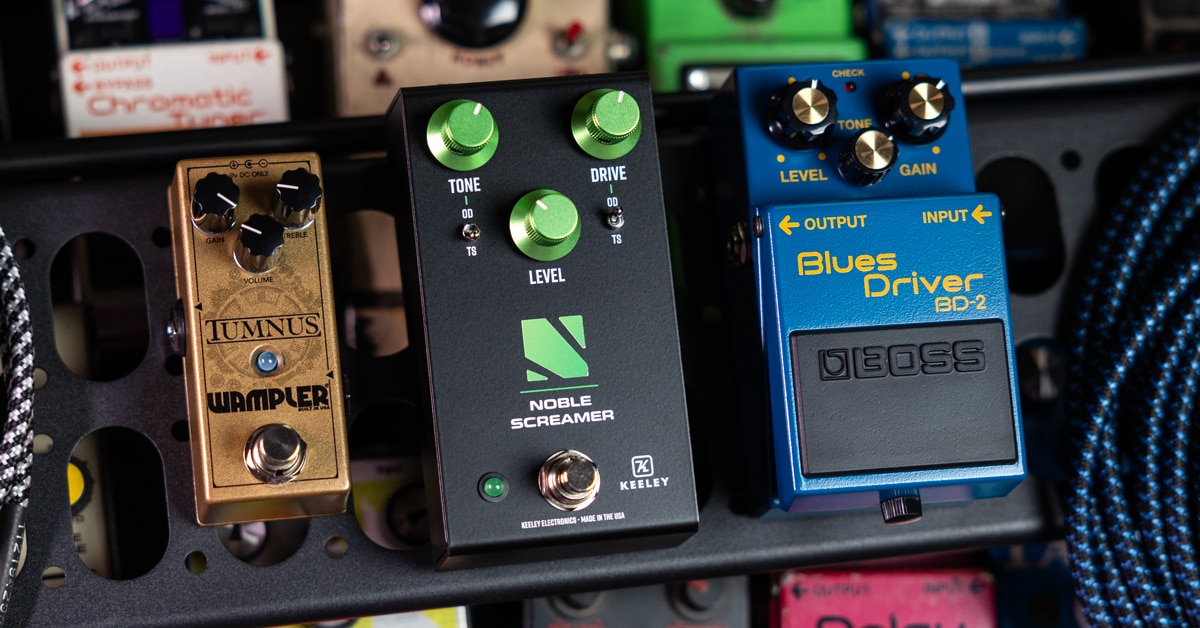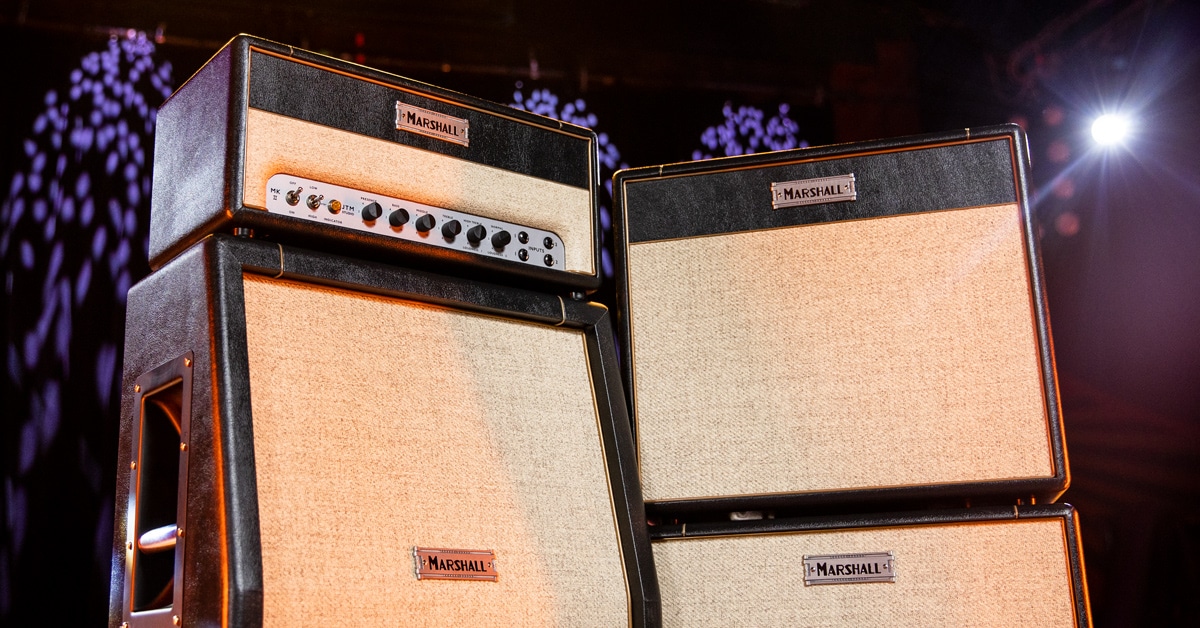When the Marshall JTM45 amp made its onstage debut in 1963, it changed the game with its one-of-a-kind overdriven harmonic content signature. As Michael Doyle—Senior Vice President of Merchandising here at Guitar Center, and author of the famous The History of Marshall: The Illustrated Story of “The Sound of Rock”—put it, the introduction of the iconic JTM45 and its combo version, the Bluesbreaker, were “the beginning of a whole really new era of tone and amplification and style.” Today, Marshall is cranking up some vintage-inspired tonal magic with the Studio JTM. Available in head, combo and cab formats, the Studio JTM was meticulously engineered—via 5881 tubes and Celestion Creambacks—to faithfully match the sonic characteristics and feel of the original JTM45 and the 4x12" cabs that would often accompany it.
In an exclusive interview, we reached out to the Marshall design team for the inside track on the creation and components of the Studio JTM, as well as the historic JTM45 models from which it was envisaged.
The JTM45 is rather famously drew inspiration from the Fender Bassman 5F6-A. Can you contextualize that, and highlight some of the key changes that Ken Bran and Jim Marshall made to create the legendary Marshall sound?
In the creation of the JTM45, a few small but very significant changes were made to the design—firstly, changing the first preamp valve from a 12AY7 to an ECC83 (12AX7). This gave around twice the gain on each of the inputs, resulting in a much stronger signal from the preamp, resulting in earlier breakup. Changes to the bright cap arrangement on the high treble inputs made that channel brighter. Different transformers, more negative feedback, and adjustments to the power rail circuitry also factor into what brought about the Marshall character.
The early years of the JTM45 are noted for several significant changes, reflecting the evolution and refinement of the desired sound—not to mention changing component availability. How did you settle on what you were looking to recreate with Studio JTM?
For this project, we had a lot of fun playing some of our museum-piece JTM45 amps from the early ’60s. But, as you can imagine, for amps which are around 60 years old, they were all a little different to each other. There are several reasons for this, including component differences, tolerances and some were a little more played-in than others. So, with this in mind, we decided to use the current JTM45 reissue as our template, which is as accurate as you can get—as it is a JTM45.
The Studio JTM uses a pair of 5881s to get 20 watts, whereas the original JTM45 pushed out 30–35 watts, using 5881s or—occasionally—6L6s. How did you achieve that operational difference while retaining the same sound and playing experience?
In reality, the difference between the 30 watts of the original to 20 watts in the Studio version isn’t that huge of a jump. To achieve the same sound and feel, we made some slight tweaks to the preamp and some headroom adjustments in the power section.
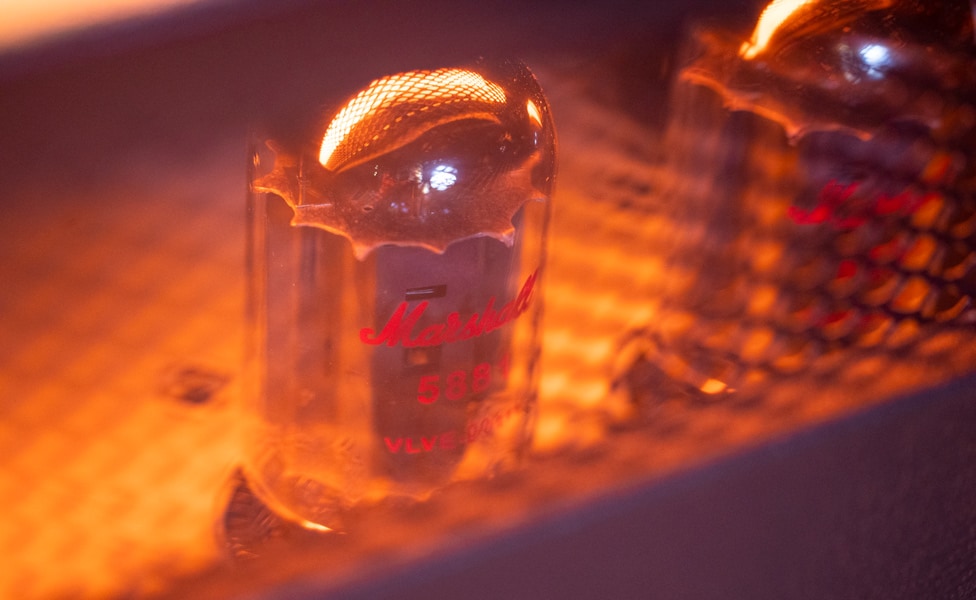
Were there any learnings from the creation of the other Studio series amps, which take much higher wattage amps into 20-watt packages?
It became apparent, when developing Studio series amplifiers, that it was important to match the sound and feel of the high- and low-power modes with the original. The attenuation technique used on this range allowed each of these power levels to be tuned independently for the best match.
While the JTM45 uses GZ34s for tube rectification, you went with SS rectification here. Did you implement any sort of sag circuit to get it closer to that GZ34 feel?
We did think about this a lot. However, when we played and experimented with the first versions of what would become the Studio JTM, their lower wattage and decreased headroom gave a response, a feel, which was extremely close to the original JTM45. Because of this, we found there was no real need to add the GZ34 rectifier valve.
Outside of the overall volume differences, how does the wattage reduction impact the sonic performance of the amp?
Because of the reduced headroom, the Studio JTM starts to break up much earlier than the bigger JTM, and compresses nicely. This makes the amp a little more forgiving to play, and more responsive at lower volumes.
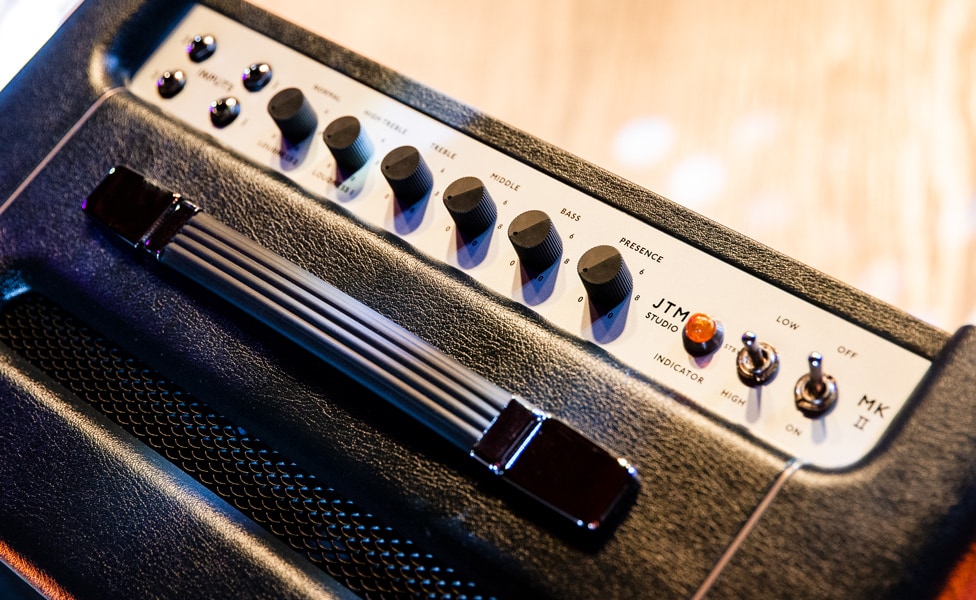
How does the attenuation circuit work, particularly compared to a master volume circuit?
The attenuation on this model works by switching the HT supply to the power amp to a lower supply voltage, effectively reducing the headroom, whilst scaling the signal coming from the preamp accordingly. This allows the same amount of power amp distortion to be achieved, for a given input signal, whether in high- or low-power modes. By contrast, when using a master volume control, turning down the MV would reduce the amount of signal into the power amp, reducing the amount of distortion occurring and changing the character of the amp.
What’s going on with signal flow when someone jumps their channels? How does that impact the sound?
The two channels of the JTM45 make use of two (semi-)independent gain stages, each with their own volume/gain control. The outputs of these are mixed and fed into the next stage.
By jumping the channels, it is possible to blend the signals going through these two stages to get a mix of the thicker, darker channel and the brighter, treblier channel, allowing a range of tonal adjustment. Due to the interactions between the two circuits, this also results in a slight drop in gain, in comparison to using a single channel.
Both the combo and the cabinets employ Celestion Creamback speakers, which are rated at 65 watts. Why did you choose to “overspec” there, as compared to say, Greenbacks? What does that extra headroom offer players?
We tested a lot of speakers, and both the 25-watt Greenback and the 65-watt Creamback were the favorites. Although the Greenbacks sounded great, we found the Creambacks gave some more low end and felt a little closer to the feel of a 4x12". Although the Studio JTM is a more portable option for players, we still wanted to go for a “big” sound.
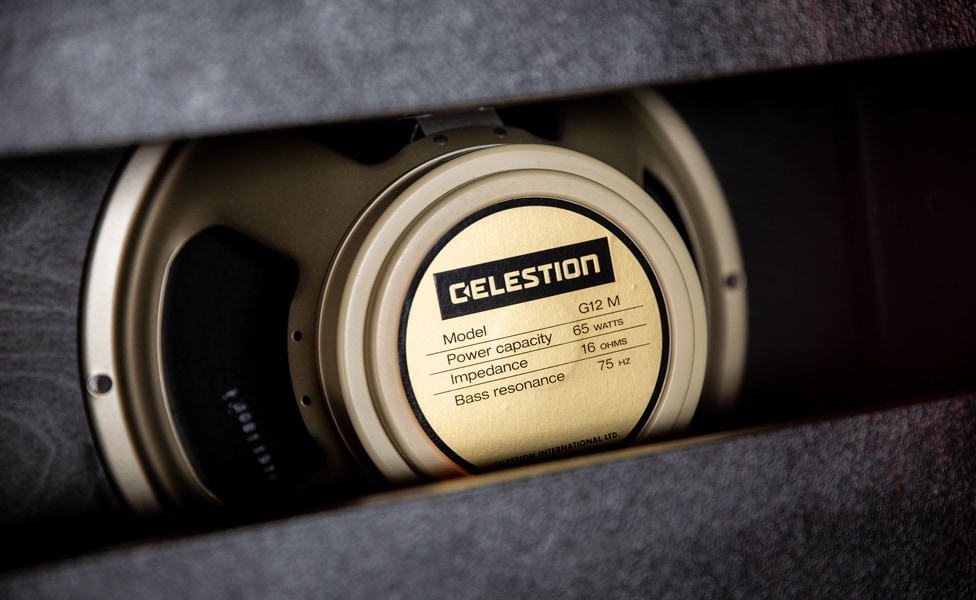
Was there any consideration to going the alnico route?
We did consider this option, but we wanted the price of these amps to sit well with the other models in the Studio range. Plus, after we tried this amp with the Creamback, we knew it would please everybody.
In some ways, JTMST20C can also be considered a baby Bluesbreaker. What type of sonic differences can players expect from the combo design as compared to the Bluesbreaker?
The Studio combo will offer a tighter, narrower sound due to the single speaker. Plus, you will be able to achieve the iconic 1962 vintage drive at lower volumes.
Was there any consideration to making it an offset, as with the early ’00s handwired JTM45 and the 50th anniversary JTM1?
We didn’t want to do the offset design again as it’s something we did in more recent years as a limited-edition product. We wanted to offer something that would not confuse those two products.
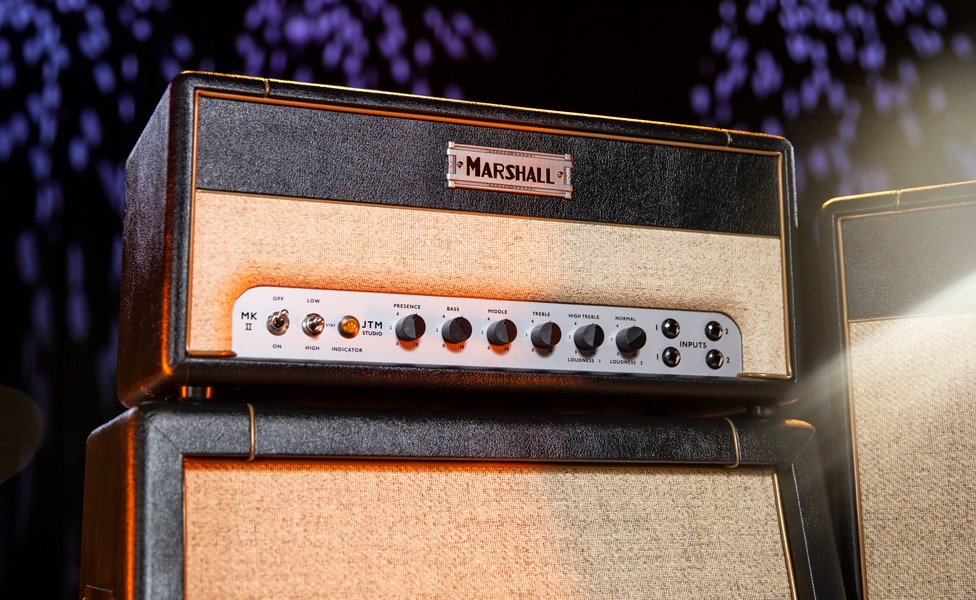
Is the final look based on a specific vintage example, or was it more of a “something from here, something from there” approach?
The early JTM amplifiers would see quite a few cosmetic changes, but the Studio version take their looks from the very first MK1 designs. These would include the grey panel, coffin logo, black V-Top controls and the Fawn fret.
Thanks for your time, guys!








